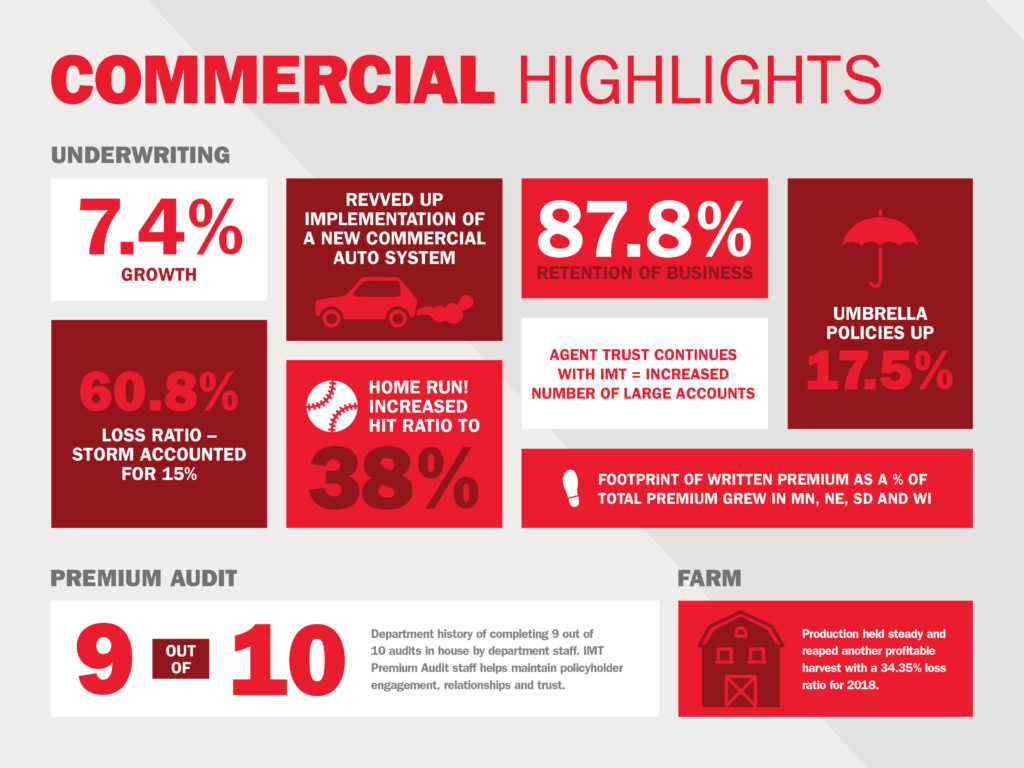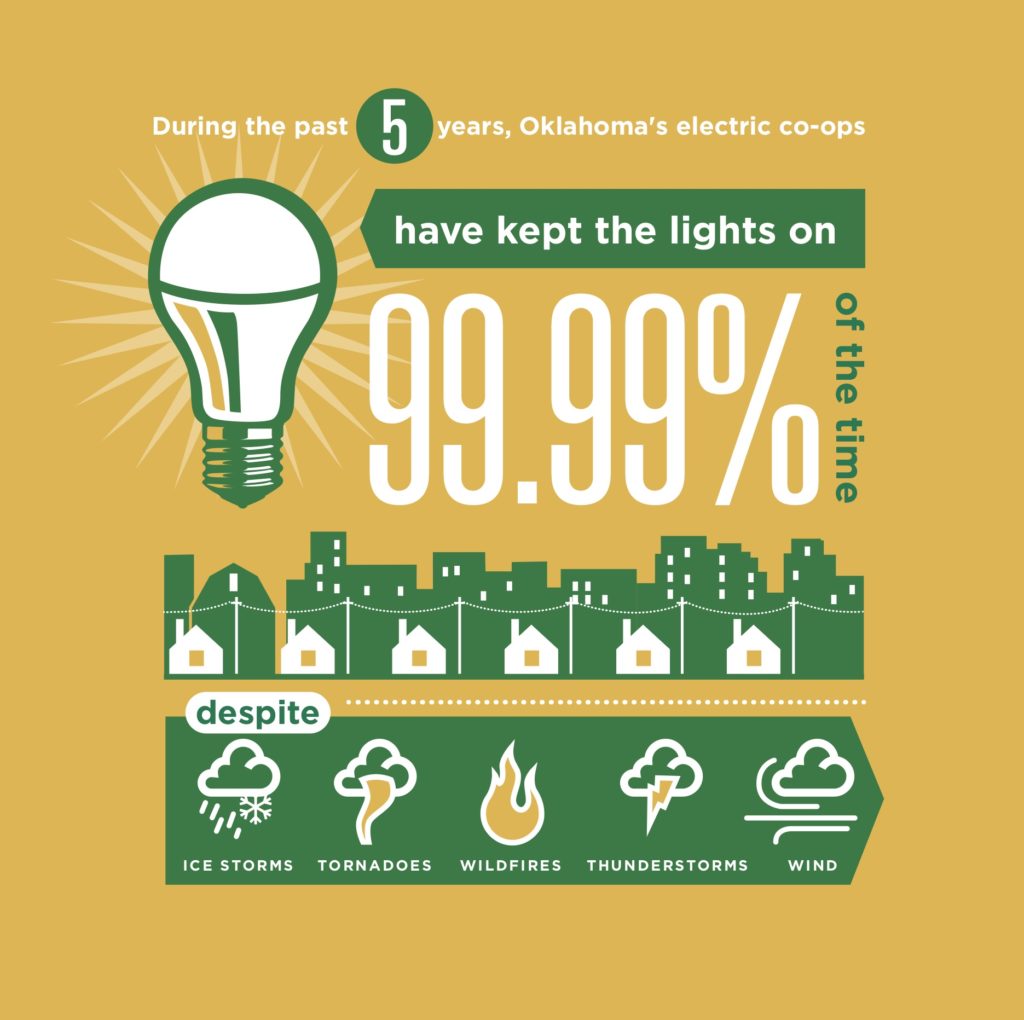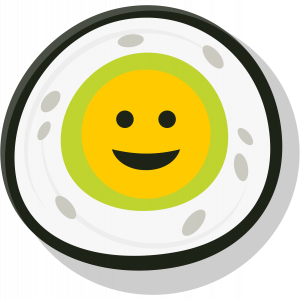What’s the difference between content strategy and content marketing? In layperson’s terms, your content strategy is how your content is produced and marketing helps put it in front of your target audiences.
So, which comes first? There’s no chicken-and-egg argument here. Your content strategy must be defined before you get to marketing it.
Developing a content strategy
Creating a strategy for your content plan is no different than other business strategies. Below is a chronological checklist your organization can implement when formulating your content strategy.
![]()
1. Define your business goals.
Long-term business goals serve as guides for every business decision and your content should be no different. Your business goals should be the backbone of your content strategy and serve as the North Star for every piece of content. In simple terms, what do you want your business to look like in 10 years?
![]()
2. Identify your primary audiences.
Every business has a litany of stakeholders. Identifying the most important ones for your organization is critical to target your content to the right people. Your audiences could include your end users, your employees, lawmakers or a variety of other groups. It’s okay to have several audiences listed in your content strategy.
![]()
3. Outline your business objectives.
Objectives need to be specific and include a key audience from your list of stakeholders. They must have a timeframe and be measurable. Every objective should end in one of two ways:
1. A behavior change.
2. An attitude or awareness shift.
If one of your business objectives is to increase sales among a certain demographic by a certain date, that is a behavior change objective. An attitude or awareness change objective aims to influence perceptions from a key stakeholder by a certain date. Knowing which one your business is chasing will make content production simpler and more impactful.
![]()
4. Create your content strategy.
With the groundwork done, you’re ready to put pen to paper on your organization’s content strategy. Remember, your strategy is how your content can help your organization reach the business objectives you defined earlier.
Here are some ideas for a content strategy focused on awareness or attitude change:
-
-
- Write articles on how your product or service improves the lives of your key stakeholders.
- Author guest content or thought-leadership content about larger industry issues for which your organization can be a leader.
- Leverage social media to share the news of how your organization offers a solution for specific needs. Speaking to the topic at large instead of just your product can help position your business as a credible resource.
-
-
Some ideas for content strategy related to a behavior change include:
- Author articles with interactive content to guide your key audiences to your organization’s services.
- Share social media content that gives your audiences a reward for giving their email or other information needed to refine sales strategies.
- Create videos featuring customer success stories to spur more sales among a particular demographic.
![]()
5. Define your tactics and timeline.
Now that you know how your content can help you achieve your business objectives, we can get creative in how we get there.
Determine your content type(s) and mix. Two articles and one video? Four social posts per week and one article? Your business objectives and key audience insights will help you make this decision.
Choose your content frequency per channel and content type. Is it weekly? Monthly? What makes the most sense for your team and your goals?
Developing a content marketing plan
With your strategy, tactics and timeline defined, you must now make sure your audience actually sees your content. Much like your overall marketing plan gets your offerings in front of your audience, you must market your own content via the appropriate channels at the appropriate times to make it go as far as possible.
Good content can only go so far without good marketing. Most content can be multiuse, meaning your blog post can be shared on social and your videos can go on your website or social media (or both).
Here’s a content marketing checklist to consider after you’ve developed your strategy:
-
-
- Be intentional with a content calendar. Create an editorial calendar to keep track of what content is going out and when, then stick to it.
- Lead with the PESO method for content marketing. Touching all areas of paid, earned, shared and owned media (PESO) is a sound way to get the right content in front of the right people, while making your content efforts go further (see “Repurpose your content” below).
- Consider whether your content is helpful to your audience. Making content just to make content wastes time and resources. Consider using a professional writer to make your written content as impactful and credible as possible.
- Incorporate search engine optimization (SEO) into all written content. A professional and digital-savvy writer can do this for you — and include backlinks and outbound links to help optimize content performance.
- Lean on team members (or an agency) with expertise. Your social media experts know the best times of day to post. They know what makes content interactive and they know what your social audience will enjoy seeing. The same goes for video. High-quality and visually engaging videos go far. Choose the right people to be on (and behind the) camera.
- Stay in the know. Don’t post and ghost. Keep an eye on how content is performing. Adjustments mid-strategy are perfectly normal and can be a smart decision.
- Repurpose your content. Make your efforts more efficient by repurposing efforts to expand the life of your content. Quotes from a video could turn into a written piece and an article could lend itself to a graphic for social media. A little creativity goes a long way.
- Track and measure digital insights. Not just with SEO, but in every component related to content. What blog posts perform best on your website? What topics does your organization shine with again and again? What metrics can you find to point you in the most optimal direction?
-
Your content is the voice of your organization. Ensuring your content is powerful, impactful, strategic and promoted will help you achieve your business goals.
Need some ideas or guidance on your content strategy or marketing? The team at Lessing-Flynn is here to help. The right agency partner can make your content go twice as far. Contact us here.
Hip hop mogul Flavor Flav of the legendary rap group Public Enemy once said, “One thing you can’t do with babies, you can’t give them steak.” This is sage advice as babies do not have teeth and teeth are requisite for chewing. More importantly, it’s helpful to the aspiring copywriter who aims to successfully serve up award-winning content and mouthwatering brand messages for their clients.
Hitherto, scientists have identified five basic flavors that the human tongue is able to detect: sweet, sour, salty, bitter and savory (aka umami).
We each have personal preferences and our tastes may evolve over time. Whereas your mother may have a sweet tooth, your mother’s mother may crave more salty vittles. As a young lad, you may have eaten Sour Patch Kids by the fistful. But now, fully grown, find yourself to be more of a savory man.
But just because you prefer savory burgers and burritos, doesn’t mean you can’t occasionally enjoy a sweet slice of apple pie.
Your marketing audience is no different when it comes to the marketing messages they prefer to consume. The seasoned copywriter – much like the skilled chef – can adjust flavor profiles to match the mood.
Let’s explore the 5 flavors of content messaging…
Flavor #1: Sweet
At first blush, you may assume sweet messaging only appeals to select audiences — like grandmothers. Perhaps you’re right. Conversely, consider this: More rugged and dare we say, masculine, audiences are not entirely immune to having their heartstrings pulled. Particularly, if you appeal to their sense of pride.
For many in the agriculture community, the most memorable commercial of the last 20 years was “So God Made a Farmer” from RAM Trucks.
It’s an inspired ode to farmers. Once upon a time, Mr. Paul Harvey delivered this powerful message with a subtle hint of sweetness and adoration in his cadence. Now imagine how different this spot would be if Harvey had used a more chest-thumping tone. Or if the commercial had been set to hearty rock music.
Indeed, here sweetness hits the spot.
Flavor #2: Sour
Something that is sour has a sharp, unpleasant taste like that of a melon. This doesn’t appeal to most, but it can be absolutely critical in your marketing messaging during tough times.
For instance, when a brand has difficult news to share, it’s best that they don’t sugarcoat it. Be honest and transparent — even if it’s a sour message that will be tough to swallow.
To be sure, that initial shock of sourness will soon fade. But disguising it with fluff or untruths will almost certainly backfire in the end, causing brand damage that can linger for years. It’s better to be sour for a day, then to be deemed untrustworthy for a decade.
Need proof?
In 2015, an E. coli outbreak hit Chipotle, lasting nearly six months and resulting in an 82% decrease in profits and a 15% loss in the stock market. Company leadership could have delivered a sour message and assured customers and employees that it was working diligently to resolve the outbreak. Most would have forgiven and forgotten.
Instead, leaders like co-CEO Monty Moran made light of the issue and placed some of the blame on sensationalist news media. Consumers received this content messaging dish and sent it back.
Flavor #3: Salty
Salty messaging is bold. Used properly, it can be quite powerful. Use too much, however, or in the wrong dish, and it quickly overwhelms. Whether in cooking or copywriting, a pinch of salt can do wonders. Needs salt or too salty are missed opportunities.
The purpose of salty content messaging is to take a stand. Let the world know what your brand is all about. Like salt, some will love it, others can do without.
In 2018, Nike created cultural shockwaves when it aligned with Colin Kaepernick, telling the world to “Believe in something. Even if it means sacrificing everything.”
The public reaction was exactly what you’d hope for when deploying salty messaging: Many loved it, many hated it, just about everyone agreed it was worth talking about.
Whether you personally loved or hated it, there is no denying that it was well worth the risk, given the amount of earned media Nike received from the Colin Kaepernick campaign.
The numbers tell the story: Nike added just enough salt.
Flavor #4: Bitter
Bitter messaging almost never works and likely won’t produce award-winning content. It’s typically childish and reactionary content. A brand throwing a public tantrum of sorts. Imagine a scenario where McDonald’s or Walmart took to Twitter to denounce a raise to the federal minimum wage. That scenario would not end well. Avoid bitter content messaging at all costs as it doesn’t align with ethical advertising.
Flavor #5: Savory (umami)
The protein of messaging. Even vegans and vegetarians crave it. Because this type of messaging cuts to the chase. It’s the facts and the figures. Where transparency meets truth. Taking a stand and holding your ground.
Recently, in response to the COVID-19 pandemic, many brands have sent messages to customers saying, “We’re here for you and happy to help.” This is sweet messaging. Then consider Google offering $340 million in ad credits to small and mid-sized companies whose business has been disrupted by the coronavirus. Or, back in 2018, when Starbucks responded to a clear-cut case of racial discrimination at one of its stores by closing all 8,000 stores to provide racial-bias training to its nearly 175,000 employees. These are just two examples of brands walking the walk and talking the talk with savory messaging.
Award-winning content and switching up the flavors
In conclusion, we in the marketing and advertising community preach the value of a consistent brand voice — it’s the essential flavor to award-winning content. But, consistency doesn’t mean you can’t switch up the flavor profile when the occasion calls for it. After all, the sign of a great chef is one who can serve up a masterful appetizer, entrée or dessert in a moment’s notice.
Look. I know discussing AP Style isn’t everybody’s idea of a good time. But consider this: Without sound proofreading techniques, allot’ve ritten comunicashun wood lewk like dis. Which doesn’t exactly get your message across or reflect well on your brand.
THAT’S WHERE I COME IN.
Fun fact: The AP in AP Style stands for April Pearson (don’t look it up). That’s me! Not only am I a senior copywriter at Lessing-Flynn, I’m also a proofreader extraordinaire. And I’ve got strong opinions when it comes to semicolons, capitalization and courtesy titles.
But first! Let’s answer some pressing proofing questions.
1. Why is proofreading important?
There’s an old advertising adage: If you can’t spot the error, you are the error. That’s not true; I made it up just now. But it still illustrates my point. What this means is that no matter how great you are at writing, you’re going to make mistakes. That’s why it’s important to proofread your work and — more importantly — have another person proofread it, too. They can look things over with fresh eyes and catch mistakes you, as the writer, automatically gloss over. There are plenty of examples of embarrasing errors that a simple read through could have prevented.
2. Why AP Style?
There are several editorial styles to choose from: MLA, APA, Chicago, AP…. I shouldn’t be telling you this, but the AP in AP Style actually stands for Associated Press, not April Pearson. I’m sorry I lied. I have a problem. The AP Stylebook was created to standardize punctuation, capitalization, abbreviation and more in mass communication. A brief history by Northern Michigan University explains it well:
“The Associated Press was founded in 1848 by six New York newspapers who desired to share resources for international news. The newspapers saved money by sharing the news that arrived by telegraph wire and dividing the expenses evenly; this prevented competition for information. The AP is currently the largest news-gathering organization in the world and uses its style to keep the news easy to read, concise and free of bias. First published in 1977, The Associated Press Stylebook lists the rules regarding grammar, spelling, punctuation and usage. The Stylebook is the standard guide for most U.S. newspapers, magazines and other media.”
Most agencies use AP Style, but no matter which style your agency / client / audience prefers, the most important thing is to be consistent. We decided to go with AP style a long time ago, and we’re sticking to it.
3. How can I, a newbie, apply AP Style to my clients’ work?
The first thing you’ll want to do is acquaint yourself with AP Style at a high level. Don’t assume the rules you learned in school carry over here — they don’t. AP Style has a lot of subjective rules, and the rules are always changing with the current communication climate.
Then I suggest investing in an online subscription to The AP Stylebook for the most up-to-date information. You can search topics, add notes, ask specific questions, create your own custom style book and more! I check out this baby several times a day and it saves me tons of time and frustration. However, the good old-fashioned paperback version is good, too! Just make sure you get the updated edition that comes out every year, usually in May. If you want to get really nerdy about it, you can also follow AP Style on social media and sign up for the e-newsletter.
Next, start proofreading your clients’ work with AP Style in mind. Look up everything in The AP Stylebook, and I mean everything. The more you research, the better and faster you’ll get at catching errors. You don’t have to know every rule by heart, but soon you’ll at least know when there’s a rule and you’ll know exactly where to find it. Keep notes of common mistakes to share with colleagues so you don’t duplicate efforts. And let your clients know why you’re editing certain phrases certain ways. If you can explain it to someone else, you’re well on your way to becoming an expert!
4. What’s your proofreading technique, oh proofreader extraordinaire?
Proofreading can be really overwhelming, but it just takes practice! And the more you do it, the better you get and the more rewarding it becomes.
A typical project for me — let’s say it’s an article — goes like this:
- I skim the entire thing to get an idea of the content.
- Then I read through the headline, subhead and section headers to make sure they’re grammatically correct, similarly structured and relevant to the main idea.
- Next, I search the article for common “trouble spots” or areas that need special attention. Are there lots of measurements or numbers? What about quotes or job titles? Trademarked products or services? I get into a groove and fix all those up.
- Then I go through each sentence with a a fine-tooth comb, offering suggestions for grammar, spelling, punctuation, etc.
- Finally, I read through the entire thing from top to bottom for flow and any rogue errors.
Proofreading anything really well takes time, concentration and an almost unhealthy desire for perfection. But when you have all those things, it’s sooo much fun!
5. Anything else?
Oh yeah, about those strong opinions I promised you: Semi-colons are neat, headlines should be sentence case and courtesy titles are for suckers.
FUN ACTIVITY: There are five errors in questions 1 – 5. Can you spot them? Email info@lessingflynn.com with the correct answers for your chance to win sweet LF merch!
Have you ever wondered how to get writing inspiration? They say the best copywriters are voracious readers, which makes sense. The more you read, the more you instinctively understand what works and what doesn’t for a variety of audiences and topics. This goes for all writers, including copywriters, journalists, PR professionals, poets, authors and everything in between.
Think Edgar Allen Poe sat on his duff, watching TV in his free time? Heck no! He was wooing his cousin, destroying his liver and READING. I mean, “The Raven” takes place in a LIBRARY, for crying out loud. The dude liked books.
Whether it’s an ad, a brochure or blog post, the copywriters at Lessing-Flynn want to write something that’s worth reading! So, where do we find our inspiration?
Long-format literature
Long-format literature is a great teacher of story development, pacing and language nuances. Romance novels, suspense thrillers, fantasy adventures, historic fiction, true crime… pretty much anything not written by Nicholas Sparks. And you can tell him I said that.
Not only do I read books, I listen to audiobooks every chance I get, often consuming two or three at a time. And there are a few books that have really stuck with me.
The same is true for Jeff Caldwell, content marketing manager at Lessing-Flynn: “I read ‘On Writing: A Memoir of the Craft‘ by Stephen King a long time ago,” Caldwell said, “and it really changed the way I approach client projects.
King never writes in a linear fashion; he establishes the conflict early on then builds the characters and story around that.
“While most articles I write lend themselves to a traditional storytelling arc, I find that mixing it up adds interest and makes the article stand out in industry publications.”
Non sequitur: That whole self-imposed rule about finishing a novel no matter how bad it is (ahem, The Notebook)? Forget it. There are just too many amazing books in the world to waste your time reading one that doesn’t pork your chops.
Short-format literature
Short-format literature is great for a quick break from intense copywriting escapades — blogs, news sources and aggregate sites offer up tons of entertaining subjects and writing methods. Not all of them are appropriate for work (don’t tell Tom and Jess), but they are great for experiencing lots of clever writing styles and pulling in writing inspiration. Here are some of my favorites:
-
- The Onion — aggressive satire that’s timely, relevant and funny
- McSweeney’s Internet Tendency — random essays that poke fun at life’s little foibles
- Post Secret — poignant one-liners that are as flawed as the people who write them
- Ask a Manager — pragmatic advice for all things work-related
- Buzzfeed — irresistible pop culture lists and articles that are clickbait gold
“The shorter the better,” said Rachel Wallace, content marketing specialist at Lessing-Flynn.
“I like quick-hit articles, especially when it comes to social media and content ideas. Mostly because I don’t want someone else’s idea to weave into my own. Our clients deserve originality.”
Additional resources for writing inspiration
Everything else may seem too broad a category for inspiration, but it’s not! Whether it’s a cereal box, takeout menu, playbill — doesn’t matter. I tend to pick up whatever piece of print is laying around and skim the content. Some pieces are really well done, and some are just terrible. Either way, I always learn something I can apply to client work. If I’m feeling particularly superior, I’ll grab a red pen and mark up the errors. These are some of the best ways to find writing inspiration.
Joe Winn, creative director at Lessing-Flynn, also derives insight from unexpected places: “I have a particular fondness for the spoken word — a penchant, if you will,” said Winn.
“Reading the transcript of a monumental speech affects me deeply… I can feel the cadence on a very visceral, very primeval level. Not only am I inspired by profound orators throughout history, like the inimitable FDR, JFK and MLK — but also by contemporary figures, like Mr. Wonderful from Shark Tank.”
Reading about diverse topics from a variety of perspectives helps expand your vocabulary, strengthen your grammar and develop your own unique style. I read anything and everything that piques my interest because it helps define my voice and makes me a better storyteller! And that’s what successful marketing is all about.
In kindergarten, we learned our numbers, colors, shapes, and letters through visual learning. Visual learning isn’t something that is new, but it is something that is becoming popular online and in print. Why? We are inundated with content every day, we are busy, and we need a way to digest all of the data we take in. Not to mention that some industry jargon isn’t the most accessible. As marketers, we should want our work to be understood by most anyone. Enter: infographics.
An infographic is a graphic that presents complex data in a visually appealing and easily digestible manner. Typically, infographics include text, images, icons and data. And above all, they deserve a place in your company’s marketing materials. Of course, we can’t talk the talk without walking the walk. Here are five of our best reasons to include infographics along with some of our most recent creations.
5 Reasons to Include Infographics in Marketing Materials
1. Everyone is busy.
Do people have time to read your entire annual report? Probably not. Create an infographic to showcase the same information, like we did with IMT Insurance! Visuals tell the consumer what they need to know in a clean, efficient manner before sending them on their way.

2. Visual learning is key.
Seeing is believing — and let’s face it, sometimes data or processes can just be too darn complex. Infographics simplify data while still conveying what’s important and engage visual learners.

3. Infographics can be displayed in various ways.
Infographics can be elevated in many ways — as in-article graphics on your blog or even as an animated video on a landing page or on owned social channels. The opportunity to bring inforgraphics to life is limitless and creativity is encouraged!
To showcase their Commitment to Safety, Okahoma’s Electric Cooperatives used existing infographics and repurposed into video content.
4. You can position yourself as an expert.
Infographics are a brand’s best friend when it comes to self-promotion. Once you slap your logo on that sucker and share it on social media, then voila! People will attribute their newfound knowledge to your brand and tell their friends how smart you are. Can’t beat word-of-mouth.
LF has used infographics to share the importance of SEO through video.
5. Hello, ROI! Track your data.
Once you’ve created your infographic, share a snippet of the data and link back to the original infographic on your website or blog. Use Google Analytics to track the traffic flow on these pages. Now look what you’ve done….you’ve driven traffic to your website!
6. Creatives are crazy talented.
Where would any of us be without our graphic designers? They have the ability to enhance any blog post, brochure, etc. with just a couple of infographics. We know our own creatives are something special and bring data to life like they were born to do, dang it.

Reach out and see how LF can bring your infographics to life for your brand.
This was originally written August 7, 2013, but updated for 2020 because not only are infographics still relevant — they’re also so much fun!
Ag equipment dealers and home-based Pampered Chef consultants could not be more different on paper, but their common goal of achieving more sales makes them kindred marketing spirits. As allies of the agriculture equipment industry, we’re here to tell you there are several valuable insights and social media tactics that equipment dealers could implement to boost brand awareness — and profits — based on Pampered Chef’s success.
P.S. Never heard of Pampered Chef? Jump to the bottom of this article for get a quick snapshot of their business model.
4 Ideas Ag Equipment Dealers Can Steal
As a Pampered Chef party participant and a marketer, I quickly noticed there were several methods agriculture equipment marketers could benefit from. The kitchen company’s focus on strong relationships, social media and content planning and consistency, provides an approach worth looking at.
1. Leverage social media to build potential sales relationships.
This is not a new tactic, but a lot of channel marketers tend to discount the power a good social media presence can provide as a sales tool. According to the shopper-first retailing report by Salesforce and Publicis. Sapient, 87% of shoppers begin product searches online before they even visit a brick and mortar store or make a purchase.
Pampered Chef consultants are taught to create social media pages to boost their personal sales, and your dealership should do the same. Local customers can and will follow along for news, promotions and announcements, but there’s a caveat. Local agriculture equipment marketers must keep content current and provide relative images of interest. There are other lead generating opportunities as well — check out this article: “Rev up your digital marketing with these 3 lead generation strategies.”
I suggest starting with one platform, like a Facebook Page, to test the waters — then expanding from there.
2. Define a pre-planned content calendar.
We hear the same concern from many ag equipment dealers that we work with every day: Social media takes too much time. While it’s true it can, but if you pre-plan your content or “posts” you’d be surprised how hands-off it can be.
One Pampered Chef consultant I observed, used a rinse-and-repeat social media blueprint with evergreen content for all of their online streaming parties. This consultant had 60 pre-written posts that deployed via a social media scheduler tool (e.g., Hootsuite, Sprout, Sendible, etc.). The quantity was certainly too much, especially for agriculture equipment marketers, but the idea of scheduling and consistency were on point.
Dealers can start small with 1-3 social media posts per week, per channel (Facebook, Twitter, Instagram, etc.) and scale from there. Pre-schedule everything using a scheduler tool and then monitor your accounts for questions/comments daily to ensure you are addressing questions when needed.
3. Social media content shouldn’t always be about the next sale.
After I signed up to host an online Pampered Chef party, the consultant was sending 8-10 pre-scheduled posts per day, checking in nightly to engage and answer questions. Her posts were overwhelming and excessive, but the thing she got right was making sure her topics and posts were constantly changing and it wasn’t all self-serving topics.
She would include engagement style posts asking party-goers questions, how-to-style product videos or provide recipes she liked to use. Engagement is key, and something agriculture equipment marketers need to focus on. Plus, the mixture of topics, style, and use of images, articles and videos really kept things interesting.
Don’t simply discuss your own products or features. Post photos or videos of customers with their newly purchased equipment, ask your followers what they think about timely agriculture industry trends or share newsworthy articles or information that impact their operation. Customers want to hear about your deals and products for sure, but being constantly “sold to” can get old.
4. Ag equipment dealers should be consistent (not annoying) online.
One pattern you may have already picked up on, is excess. While my Pampered Chef consultant did a great job of keeping her network engaged, she also smothered us to death with content. Sending 10 posts a day is insane — do not do that.
In the social media world, moderation is just as important as consistency. Give your followers a chance to miss you without bombarding their feeds. I would strongly advise just a few posts per week to start.
Posts should be spread out and sent at varied times. Using a pre-schedule tool will make this much easier to track and many times these tools (see point 2) will suggest the optimum post times based on your followers’ preferences.
For eager agriculture equipment marketers and their customers, a great social media strategy is truly a win-win. Getting started is the hardest part! If you are overwhelmed or have questions, reach out to the team at Lessing-Flynn to develop a strong, consistent and impactful social media plan to grow your audience.
What is Pampered Chef?
Pampered Chef is often thought of as the cooking tool brand of suburbia. If you’ve never heard of it—ask the cook of the household. The company is a direct seller of kitchen tools and employs a 40,000+ salesforce of Independent consultants that sell their products. Just like Tupperware and Mary Kay, the company is a love-em-or-hate-em multi-level marketing company.
They’ve nailed down a successful, basic selling formula:
- Secure a party host who invites a number of friends to their home.
- The consultant performs a cooking demo using Pampered Chef products.
- Everyone eats the free food made before their eyes and orders items from the catalog.
It’s the app known for sparking a congressional inquiry regarding national security or more importantly for “exposing” Panera Bread’s mac and cheese. As irritating or odd as you may find TikTok, brands should give it a chance. The time is now to pull your best TikTok marketing ideas together and form a plan, before dismissing the app as a fading trend.
Created in 2017, TikTok is a video-sharing app and social platform that allows users to share videos up-to-a minute long. The format has been around for a few years; the app is an offspring of musical.ly but often emulates the humor of Vine. And in the last year, it has exploded in popularity.
Some would say that it’s the next big platform for advertisers to watch, but we disagree. Brands should actively jump in and join. Here’s how to do just that and some great brands that are already doing it right.
TikTok for Marketers
Why get on the bandwagon? Because the best TikTok marketing ideas are still waiting to be discovered. Here’s what you should know:
1. How Popular Is TikTok?
TikTok boasts over 500 million downloads from the Google Play Store and sits above YouTube in the Apple App Store charts. Additionally, 1-in-8 U.S. adults have already joined the platform.
2. TikTok is like Vine, but it can last.
In many ways, TikTok is the next Vine, Twitter’s former-yet-infamous 6-second video platform. The platform demonstrates similarities in terms of its ability to create cultural moments and memes, as well as continues to shift the dynamic of how young people communicate online. Unlike Vine, it will most likely not feel like a flash in the pan. This means there’s a better likelihood your TikTok marketing ideas will have better staying power.
3. TikTok Demographics.
Like most social networks, especially in their early stages, TikTok’s demographics skew toward the younger crowd. It’s estimated that around 50% of users are under the age of 34. Building brand awareness in this demographic right now is a huge opportunity.
If your brand is going after this demographic for the first time, jumping on the TikTok platform now may increase awareness within your customer targets. Less competition means future customers will be aware of (and talking about!) your brand in the long term.
4. TikTok Ads Aren’t Pervasive (yet…)
Because TikTok is still relatively shiny and new, users aren’t being bombarded by ads and branded content yet like they are on Facebook-owned platforms. Native TikTok content can be legitimately entertaining and also influence consumer behavior. Advertising inventory is available, and TikTok has been actively coming up with new ways to get ads in front of their users, but the best way to get started with the platform is just to start posting.
Clever TikTok Marketing Ideas
So, what brands are already on TikTok performing well? The best TikTok marketing ideas, methods and execution we’re currently tracking are coming from a brand you may not expect — a legacy newspaper.
The Washington Post posts every day and has amassed 300,000 followers and nearly 16 million likes on their posts.
@washingtonpostGasp!!!!!! #newsroom #eviltwin #somosWaPo #telenovela♬ original sound – washingtonpost
@washingtonpostThe news tried really hard to write wesleylowery #newspaper♬ Illumin – jvantheman
And of course, even the beloved burrito chain, Chipotle, has done well on the app, too. Their account has surpassed 250k followers.
@chipotleSmh #foryou #foryoupage #college101 #chipotle♬ Fire Burning – Sean Kingston
@chipotleDaily affirmations #peptalk #fyp #chipotle♬ original sound – rhysy_w
Why do Chipotle & The Washington Post have a large TikTok following?
You’ve probably never heard of Ludwig von Mises, an Austrian economist who immigrated to the United States in 1940 to escape the Germans in WWII. Or George Stratton, the American psychologist who pioneered studies on human perception. Or, our own Paul Lessing, founder of Lessing-Flynn 110+ years ago (and Iowa’s Godfather of Advertising).
The following is a discussion about consumer behavior that may (or may not) have actually happened when they each may (or may not) have randomly run across each other at a speakeasy in downtown Des Moines 90-ish years ago. This may (or may not) have been the most important meeting between the famous economist, the renowned psychologist and one of the ad industry’s true original mavericks.
AND, ACTION
Lessing:
Hello old friends. It’s with great honor that I share this opportunity and a cold brew with two of the finest minds in their respective fields of psychology and economics. Let’s raise a glass and toast to our common understanding of human behavior …but not too high, as we are still in prohibition and we wouldn’t want to get caught consuming a wicked concoction such as this. What have each of you been doing to further the study of man and his behavior? I am looking to leverage your wisdom.
Stratton:
Well, Paul, I’m not certain that you’ve heard of the soon-to-be famous experiment that I have been conducting to test the adaptability of the human brain. I just so happen to have brought these special goggles. If you try them on, you’ll see that the mirrors inside them invert the perspective of your view. Instead of seeing things upright, you see them completely inverted — up/down or left/right.
Lessing:
Oh, George, I don’t need special goggles to invert my perspective. Just order me one more of this fine brew and it will do the same thing, albeit only temporarily. But please, do tell more!
Stratton:
Well, for my experiment, I donned these goggles for twenty-four hours a day for the better part of a week. Imagine walking through your own house with everything inverted. It was dizzying and laborious to say the least. But by the 5th day, I was able to start getting around a bit more comfortably. And by the 8th day, it almost felt, shall I say, normal. My brain had adapted and un-inverted my perspective.
Lessing:
Oh George, un-inverted is not correct diction. But I digress.
Stratton:
Ah, Paul, you always were the wordsmith. But the point is, my research shows how the human mind adapts quickly and becomes a very efficient filter of information. I thought this may be applicable to your line of business as an advertising pitchman.
Lessing:
Yes. Yes! This will come in very handy as my analytics have shown people spend less time reading circular ads and pamphlets delivered by mail. I can only imagine how difficult it will be to capture the attention of customers bombarded by advertisements delivered by radio and other technological devices. Human minds will quickly learn to filter out ads out much like they do the Burma-Shave ads alongside the country roads today and it will be incumbent on those in my line of work to continue to effectively develop new strategies to deliver messages that are not caught in these filters. Content marketing. Influencer marketing. Experiential marketing. Even just more creative, entertaining ways of presenting a brand will be important.
Stratton:
Ah, now you have lost me. The science of advertising is far too difficult for my simple mind to grasp. But alas, it sounds as though understanding how the human brain effectively filters out common advertising will be helpful as you determine new ways to create effective marketing strategies. Ludwig? You’ve been relatively quiet? What have you to contribute?
Von Mises:
Yes, Stratton, I too am intrigued by your discovery. While yours touches on the mastery of effectively delivering a message via a medium that doesn’t get filtered by the consumer’s mind, mine touches on the importance of the message itself. Have you read my magnum opus, Human Action? It’s in all of the prestigious book shops in the East.
Lessing:
Ludwig, I’m afraid you stumped us at magnum opus. English, my friend.
Von Mises:
Haha! I’m afraid I’ve overestimated my esteemed colleagues this evening. You can read my full doctrine, but it was written in a vernacular that may be foreign to you, so I will just give you the Cliff Notes version:
- People are motivated to improve their own situation. All people act this way. The difference is in how they value things, and this is determined by their unique personal experience, knowledge and access to information.
- For a person to act, they must:
- Become dissatisfied with their current condition
- See a viable solution
- Feel they can achieve that solution.
Lessing:
Very compelling. Do let me know when you’ve released the “voicecast” because I would love to hear more. From a marketing standpoint, I see where this is highly applicable in terms of consumer behavior. Essentially, what you are saying is that we must sell the problem before we can sell the solution. If people don’t know there is a problem, they won’t seek a new product or service that will solve it for them. This, my friend, is pure genius and directly applicable to some new clients challenged with selling farm boots and lightning rods.
Well gentlemen, I must go. Thank you for your enlightening discussion. We must do this again soon. It has been far too long. I assume one of you will close out the tab. I’ll get the round next time. Be safe.
*Fade to black*
Marketing trends are always changing — that’s what makes our jobs exciting! We asked a few of our in-house marketing experts what they’re currently excited about, and we got a lot of different answers.
QUESTION: WHAT ARE YOU EXCITED ABOUT IN MARKETING RIGHT NOW?
Laura Plumb, digital strategist
“Seeing how digital/social advertising is affected by the General Data Protection Regulations (GDPR) that limit our targeting capabilities — how can we still be effective in reaching our target audiences?”
GDPR is a collection of European Union (EU) laws that — you guessed it — protect the personal data of EU citizens. And yes, U.S. companies are subject to these laws if they are “processing or are a controller of” EU citizens’ personal data. This makes targeted advertising a little more difficult because certain info we base our campaigns off of is less available than before. In fact, 60% say that new GDPR has “significantly” affected workflow when it comes to dealing with private data. But Laura likes the challenge!
April Pearson, senior copywriter
“Getting away from ‘sales-y’ language and using more natural word selections for search engine optimization (SEO).”
It can be hard to put yourself in the mind of a consumer when brainstorming keywords! But April is a word whiz and is constantly working with our in-house SEO experts to choose relevant keywords that will boost content search rankings. Check out one of our past blog posts about effective key word strategy in the meantime!
Angela Johnston, art director
“Using new Adobe tools and extensions/capabilities.”
Adobe does a pretty good job of publishing articles that showcase their program updates, such as Photoshop. If you’re a creative, these updates can cut the time it takes to finish a job in half. Did you know that Adobe is releasing a new drawing app for the iPad called Fresco? Now you do.
Rachel Wallace, content marketing specialist
“Finding new ways to create and use content for our clients. It’s a fun storytelling challenge that never ends.”
Content marketing is all about using content pieces to attract and retain visitors, and eventually turn them into customers. From blogs to social media to video and beyond, creating content is essential to building trust with new and old customers. If you don’t have a content marketing strategy in place, you’re probably constantly scrambling to come up with things to talk about, and that’s no way to live (let alone, market yourself). We can help *insert eyebrow wiggle*.
Paris Solsma, account manager
“Trying new digital capabilities and optimizing new content — YouTube in-stream bumper ads, responsive text ads and new website layouts.”
Digital advertising will only continue to blow up, and that means that we have to stay innovative in the way we present ourselves and how our presentation reflects the consumer. Read up on bumper ads here to learn how they can work for you, too!
Jordan Beynon, account director
“Building influencer programs for clients!”
Testimonials from someone that’s tried a product can turn a tough sell into a piece of cake, especially on a platform as personal as Instagram or Twitter. Nothing influences public opinion quite like a real customer. Never tried influencer marketing before? Look into it if you’re wondering how to add some authenticity to your strategy.
Shannon Hughes, media strategist
“Using our reporting platform and custom URLs to track the buyer journey after the click.”
Everyone in the biz wants to get inside the mind of the consumer/potential client. That all starts with attempting to understand their browsing habits and observing what parts of your webpage need work in order to increase internal click-through rates (CTR). The average click-through rate is around 2%. Where do your CTRs fall?
Emily Nichols, account director
“Tracking the right data and making the data work hard. It’s easy to track a lot of information and data points, but it’s hard to hone in on why you are tracking and what you’re going to do now that you have the results.”
Exactly. You may be rushing toward finding an answer among the masses of data but don’t have a clue what that answer means in the grand scheme of things. Putting some purpose and direction behind tracking and research will have much more visible payoff. Boom. Velocity. Start with “why” and go from there, making sure to check in with your results and tweak your strategy periodically.
Jeremy Jones, art director
“Tradeshows and the opportunities we have to market our clients in a way that will bring traffic and qualified leads to their booth.”
Brand awareness and getting attendees to your booth are just two pieces of the pie at tradeshows. Once you get them to your booth, what’s your plan? And how do you figure out which are real potential customers? The old practice of collecting names and business cards is often a big waste of time. We’re always testing new tactics and designs to earn our clients qualified leads and intentional foot traffic.
Tom Flynn, president
“Pushing clients to think outside of traditional ways they can demonstrate their brand and start thinking about how they can own not just the content, but the way it is delivered, as well. There are so many ways clients can have a bigger impact by owning the experience themselves — with websites, podcasts, videos, emails and events. Owned content and owned delivery.”
Yes! Own it all! Being a trendsetter with groundbreaking content is one thing, but innovation and personalization via your media vehicle? Give yourself a pat on the back, friend. That’s a winner, for sure.
AND FINALLY…
Jeff Caldwell, content marketing manager
“New business opportunities!”
*pointed look*
But seriously, we’d love to have you, so why don’t you “drop us a line,” as the kids say.
We asked our in-house experts at Lessing-Flynn to part with a few marketing tips — consider it a free (mini) crash course in marketing strategy. You’re welcome.
Start with identifying your audience.
As much as we want every single person that happens upon our ad campaign to fall in love with it, that’s just not realistic. Identify a target audience to start with and, you may notice emerging audiences that you can cater to in the future. So how do we do that? First, look at your current customer base and ask yourself why they buy or use your services then look for common characteristics (age, location, gender, personal values, lifestyles etc.) and interests and cater your messages to those individuals.
“A lot of marketers like to create ‘personas’ for their target audiences and that’s great, just don’t use them for every tactic — they are best suited for individual campaign goals. I’d suggest starting with outlining a few of these general characteristics and speaking to your audience based on those findings.” — Rachel Wallace, Content Marketing Specialist
Take inspiration from anywhere.
Thomas Edison didn’t invent the light bulb. Seriously — hundreds of other prototypes were available at the time, his was just the best. And sorry Apple fans, but Steve Jobs didn’t invent the mp3 player, tablet or smartphone. These were all things. But again, Apple simply built the best versions of these products — making them iconic and 100% Apple in doing so.
“Don’t obsess over coming up with truly original ideas. Such things hardly exist these days. It’s okay to be inspired by the ideas of others. Like the font treatment you saw on a billboard or a certain video style that pops up on YouTube. Just don’t copy it. Make it 100% your own.” — Chris Hanson, Creative Director
Less is more when it comes to design and copy.
Both of these tricks stress the importance of simplicity. Sometimes we can overwhelm ourselves and try to force something that is too elaborate but doesn’t best suit the piece we’re working on. It’s good to take a step back and ask yourself if your key message is still the shining star. Consider your goals and the results you want to achieve. Don’t get distracted by a flashy new marketing trend that isn’t going to benefit your business.
>>> Read “3 Steps to Using Better Graphic Designs in Social Media” by Graphic Designer Kara Hoegh.
Identify short-term objectives for a long-term strategy.
From the client to the account team to the video team, everyone is operating on a time frame, and some are more grueling than others. That’s why it’s best to hash out short-term objectives that are part of a long-term plan. Not only can these appear more manageable to accomplish, but accomplishing short-term objectives can act as extrinsic motivation that will help fuel endurance to see the plan until the end.
“Let’s say we want to hit a certain number of new followers on a client social channel by the end of the year — that number may sound daunting at first but when you divide it up into a quarterly time frame and then create targeted campaigns and promotions it will be easier to achieve and work towards.” — Emily Nichols, Account Director
Stand out by being traditional.
We are in the digital age, and more and more businesses are making an impact using the internet as a marketing tool. That means overcrowding and burnout are not far behind. Stand out from the crowd by rolling out a physical magazine instead of an email blast, or run a unique print campaign in a popular magazine that shares part of your target audience as opposed to bothersome YouTube ads and pop-ups.
>>> Read “How to Make Print Ads Powerful on a Tight Budget” by Media Strategist Shannon Hughes.
BUT, don’t underestimate digital marketing.
Whether you find a certain comfort in traditional marketing techniques or you’re still in denial about the power of the internet, you need to recognize that the popularity of digital marketing is not unwarranted. Advertisers have the capability to place a link right to their product or service within the ad itself, boosting immediate engagement rate, an advantage over traditional marketing. That’s why research is such an important part of the process. Again, what is going to work best for you?
>>> Read “Making the Move to Digital Advertising” also by Shannon… she’s super insightful.
Collaboration makes everything better.
Whether you have too much on your plate or have reached a creative fork in the road, having team members to delegate to or bounce ideas off of is incredibly useful, even if your inner introvert protests. Don’t forget: Teamwork makes the dream work!
“Sometimes you’re your own worst enemy when it comes to creativity. Group brainstorms bring diverse thoughts and ‘idea nuggets’ to the table — one person might say something weird and it will send us all down a rabbit hole that eventually spawns a huge campaign.” — April Pearson, Senior Copywriter
Video Strategy
I love a good steak — thick with a good sear, a little bit of sea salt and some fresh cracked black pepper. There are few things more mouth-watering than a properly-cooked dry-aged steak. In fact I’ve yet to have a bit of beef that I’ve not enjoyed. But I’m not here to wax poetically about the flat iron or share my favorite recipes. Maybe later. Instead, I want to share how my love of beef serves as good inspiration for my second passion in life: producing great video content.
Beef isn’t cheap. Raising a steer to maturity, transporting and preparation are expensive. Only eating steaks and rib-eye would cost hundreds of dollars per pound. Luckily, we’ve found ways over the course of time to make use of nearly every part of the animal. In doing so, we’ve stretched our food supply and used our resources to the best of their abilities.
Video production can also be expensive. Between paying our highly-skilled media professionals, buying or renting precision equipment, travel expenses and most of all the time it takes to produce great content, the costs can add up quickly. Yet, in the same way that we wouldn’t raise a steer just for one steak dinner, we use all the assets of video production to create a variety of effective and interesting content pieces for our clients.
By going into the production process with this mindset, we can better plan on creating and using our content. This is important. We should be asking ourselves what other resources we could generate for our client, what other messages we could be communicating and how. This may include asking our interviewees additional questions, filming additional b-roll and in general, thinking beyond the immediate task at hand. This way of thinking builds versatile tools and assets for clients to use.
One 90-second testimonial can be recut into a 30-second or even a 15-second spot. Photos and audio sound bites can be combined with animation to create short GIFs or Animatics. Again, striving to use every part of raw content can lower the cost per individual piece but increase ROI. So while one steak may sound expensive, if we’re using the rest of the cow as efficiently as we can it will be one of many meals.
In fact we recently applied this production philosophy to a two-day shooting event held by our client Equipment Technologies. We had five team members shooting video on-site with multiple cameras.
While the primary focus was to capture longer 2- to 3-minute Apache Sprayer testimonials, our team is now able to re-cut hours of footage into an additional dozen short 15- to 30-second videos. We also took stills and quotes from our video production and created static display ads and social media graphics — all from one scheduled video shoot that needed to happen anyways. We’ll be using all of these stored assets for future content needs.
So whether it’s an excellent steak dinner (primary video production) or a set of skirt steak tacos (re-cuts), it’s all a part of our process of getting as much content for our client’s dollars as we possibly can and leave them hungry for more. Bon apetit.
Mercy College of Health Sciences prepares students for a career in the healthcare industry by providing a unique education experience — unlike anything found at larger, more traditional four-year institutions — focusing on smaller class sizes, industry-experienced faculty, flexible scheduling, the latest techniques and technologies, and affiliations with hospitals and clinics. Located in downtown Des Moines, Iowa, Mercy College has built an entire legacy around its specialized healthcare education programs.
The Situation
After Mercy College launched their rebrand in 2018 (including a new logo and a new color palette) their exterior signage was updated to showcase the modernized look, but interior updates were excluded initially. The campus has several buildings including a new Academic Center of Excellence, high-tech nursing simulation lab and scores of light-drenched hallways. However, several campus spaces, including a building that was a hotel in a past life, didn’t adequately reflect the new, lively brand. For students walking around campus between classes and prospective students touring the campus facilities, there was a huge opportunity to help them continue to bolster the brand through environmental graphics.
The Solution
Lessing-Flynn worked with Mercy College to develop new on-brand experiences throughout the campus with environmental graphics. The new graphics include refreshed classrooms, hallways and lobby spaces.
Lounges
There are a handful of small gathering spaces around campus. We emphasized the College’s core values, along with medical illustrations, as a nod to the college’s history as well as reinforcing the values that all students and faculty live and breathe. The walls feature a bold flood of the brand’s purple, which helps add a richness to the space.
Classroom
One of the larger, lecture-hall style classrooms was next on our list. There was ample opportunity to make the space more inviting for students and community members alike. Oversized medical illustrations now add visual interest to the walls, helping doorways blend into the front of the classroom. The front wall was painted a neutral color to minimize distractions and allow any projected images to appear clearly.
Hall of Excellence
One of the main hallways connecting two campus buildings featured dim lighting and an old china cabinet that displayed student and staff awards and achievements. We turned this space into a branded “Hall of Excellence” to give it purpose and better highlight the Mercy College core value of excellence. New glass cabinets, along with feature lighting, help bring the space up to date. A new set of glass displays now highlight all of the Mercy College accreditations — this hall now serves as a prime stop on prospective student campus tours.
Timeline
The wall outside the President’s office had served as a storage location for the Mercy College pull-up banner backdrop. The space is at a key connection point between buildings, so we took the opportunity to showcase the history of the organization with a new timeline installation that can easily be updated into the future by swapping out the dated stand-off placards.
Entrance
The entrance to their west campus buildings originally featured a large wooden cross which, while important to the Catholic institution, wasn’t helpful in directing visitors and students to the important locations on campus. The new design offers way finding through the directional arrows, and the new Mercy College logo greets visitors and sets the stage for the rest of the branded campus environment.
The Results
The campus spaces are transformed — see for yourself in the album below! Students, faculty and staff have all enjoyed the refreshed spaces. Although it is difficult to tie the campus graphics directly to enrollment, the team has received lots of positive feedback from prospective students who have said they find the campus welcoming.







